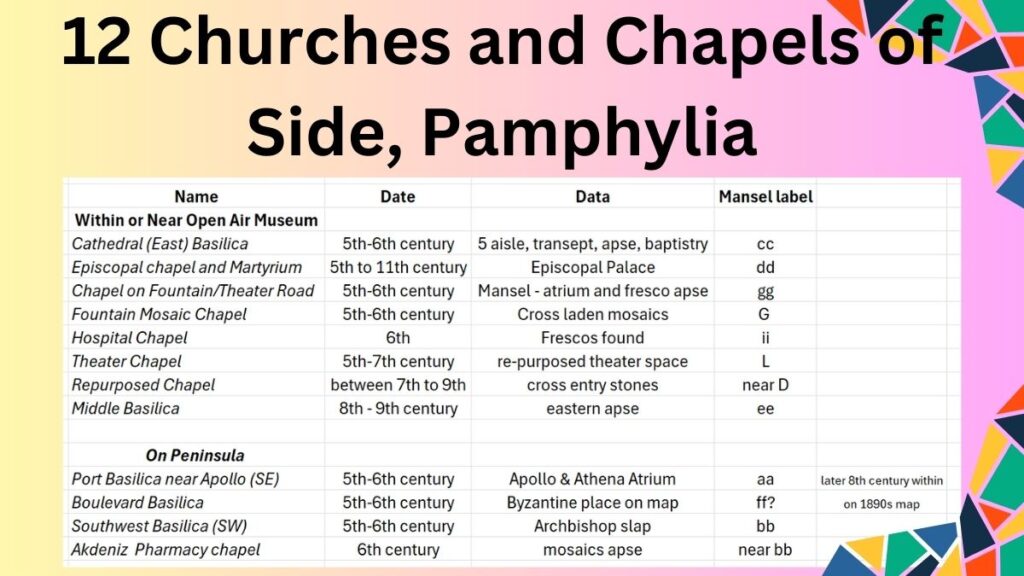- The Byzantine Episcopal Influence on the History of Side, Pamphylia
- Exploring Side, Pamphylia Hidden Byzantine Monuments
- The Lost Metropolis Episcopal Palace in Side, Pamphylia
- Discovering the Repurposed Chapel in Side Open Air Museum
- The Hidden Mosaics among the Side Market Shops – Part one
- The Hidden Mosaics among the Side Market Shops – Part Two
- The Hidden Mosaics among the Side Manavgat Shops – Part 3
- Hidden Things From Side’s Fountain to Grand Theater
- Hidden Crosses in the Side Archeology Museum
- Side’s Fascinating Basilica near Apollo Temple
- Analyzing the 12 churches and chapels of Side, Pamphylia
- Analyzing the Synagogue in Side, Pamphylia
The Byzantine Basilica near the Port of Side in Pamphylia surrounds the temple spaces of the Athena and Apollo temples on two sides. This 5th-century church utilized the area of the temples for its western atrium. Additionally, an 8th-century South Basilica is nestled within the older Basilica. As a result, visitors can see a double apse within the walls of the more prominent church ruins.
Central Nave
From the back of the Athena temple, the size of the central nave shows the center and the two aisle. Uniquely, in Side, none of the larger basilicas reused a major temple. None of the numerous temples were fit for their worship. Yet, in this situation, the basilica and the residency on the north occupy an open area on the East and North, to surround the two temples.
Atrium
Psalm 103:12 says, “As far as the east is from the west, so far does he remove our transgressions from us.” The Byzantines entered baptism from the West and exited to the East. Likewise, they entered churches from the West and headed East for worship. In this situation, they walked through the temple’s destroyed area and toward their worship of the true God. The civic and Roman god-places sat in ruins but became the atrium for the 5th-century Southeast Basilica.[1]most Basilicas in Side are labeled by their geographical position to each other
This location most likely became the primary influence of the Byzantine faith of Side after the 6th century. The newer walls of Side enclosed the city on the peninsula. Just north of this basilica are residences and other buildings associated with this church. The video above gives much insight into this location.
Multiple churches and chapels scattered throughout the city display the accessibility of worship that the Byzantine Christians desired.

For further explorations between Christianity and Islam.

References
| ↑1 | most Basilicas in Side are labeled by their geographical position to each other |
|---|
Leave a Reply